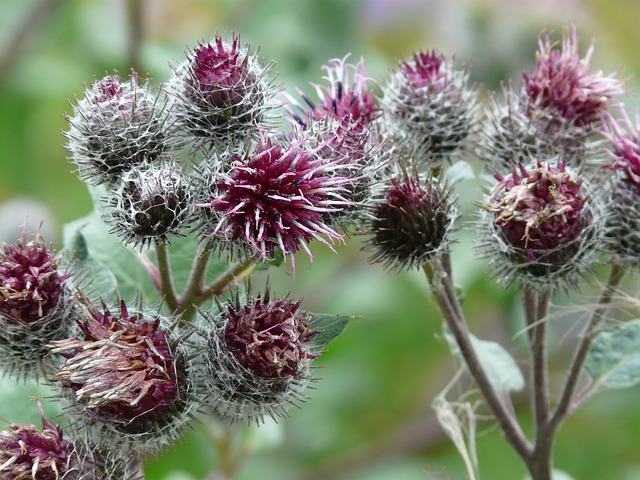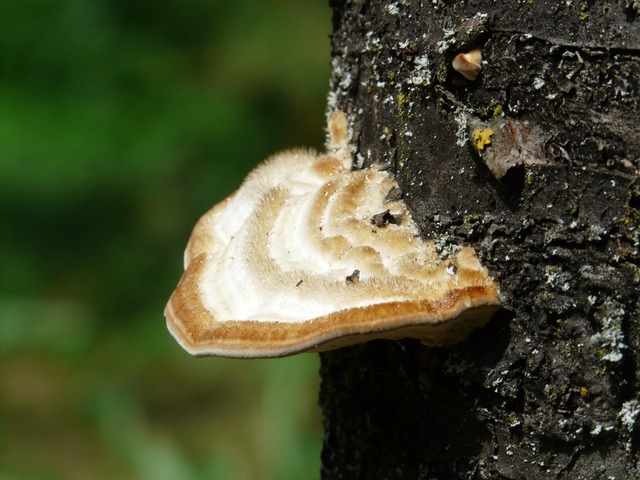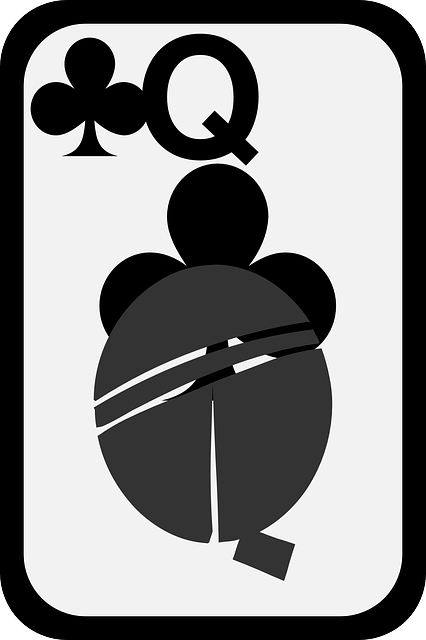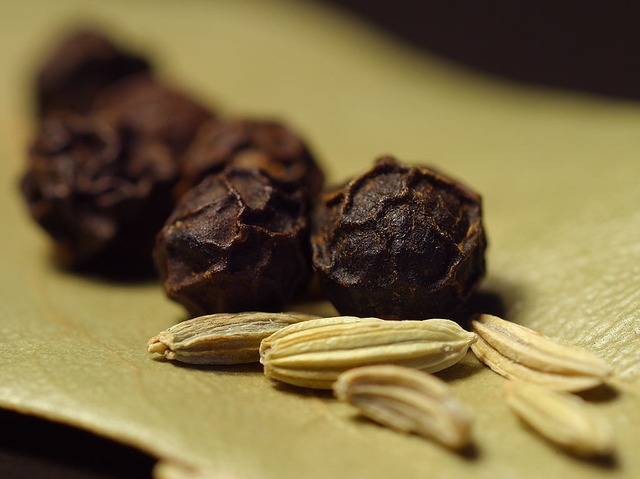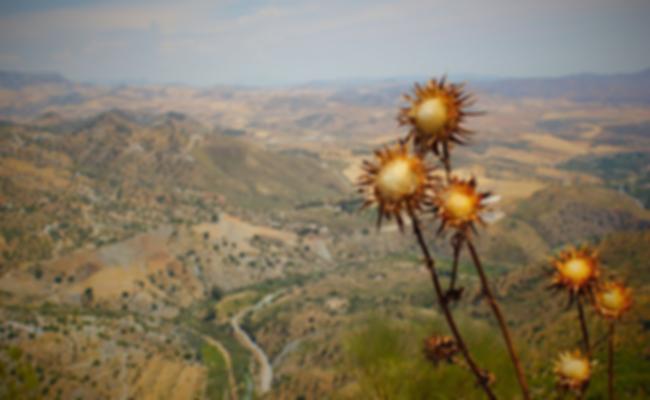لوپ نور
| لوپ نور | |||||||||||
|---|---|---|---|---|---|---|---|---|---|---|---|
| صورة ساتلية لحوض بحر لوپ نور السابق؛ السواحل المركزية من البحيرة المختفية يمكن رؤيتها. | |||||||||||
|
لوپ نور | |||||||||||
| اسم صيني | |||||||||||
| صينية تقليدية | 羅布泊 | ||||||||||
| صينية مبسطة | 罗布泊 | ||||||||||
| |||||||||||
| الاسم الصيني البديل | |||||||||||
| الصينية التقليدية | 羅布淖爾 | ||||||||||
| الصينية المبسطة | 罗布淖尔 | ||||||||||
| |||||||||||
| اسم منغولي | |||||||||||
| المنغولية | ᠯᠣᠪ ᠨᠠᠭᠤᠷ Лоб Нуур |
||||||||||
| اسم ويغور | |||||||||||
| ويغور | لوپنۇر | ||||||||||
لوپ نور (Lop Nur أوLop Nor (اسم منغولي يعني "بحيرة لوپ"، حيث حدثة "لوپ" اسم مستعار غير معروف الأصل)، هي بحيرة مالحة سابقة، جف معظمها حالياً، تقع بين صحراء تكلامكان وكومتاگ في الجزء الجنوبي الشرقي من منطقة شينجيانگ ذاتية الحكم الاويغورية. ادارياً، تقع البحيرة في بلدة لوپ نور (الصينية المبسطة: 罗布泊镇; پنين: Luóbùpō zhèn)، والمعروفة أيضاً باسم لووژونگ (الصينية المبسطة: 罗中; پنين: Luózhōng) في مديرية رووچيانگ، والتي تعتبر بدورها جزءاً من محافظة بايإنگولين ذاتية الحكم المنغولية.
منظومة البحيرة التي يصب فيها نهري تاريم وشولى هي آخر ما تظل من بحيرة تاريم الجليدية الجليدية التي كانت تغطي أكثر من 10.000 كم² في حوض تاريم. لوپ نور هي حوض تجميعي هيدرولوجي- وهي landbound وليس لها منفذ. عام 1928 كانت مساحة البحيرة 3.100 كم²، لكنها جفت بسبب إنشاء السدود التي منعت تدفق المياه المغذية للبحيرة، وقد تسمح فقط بتشكل بحيرات موسمية صغيرة ومستنقعات. بحيرة لوپ نور الجافة مغطاة بقشرة ملحية يبلغ سمكها 30-100 سم.
استخدمت المنطقة الواقعة شمال غرب لوپ نور كمسقط تجارب نووية، ومنذ اكتشاف البوتاس في منتصف التسعينيات شهد المسقط أيضاً عمليات تعدين واسعة النطاق.
يوجد بالمنطقة بعض الأماكن المحظورة الخاضعة للإدارة العسكرية ونقاط حماية للآثار الثقافية، والتي ليست مفتوحة للجمهور.
التاريخ
منذ حوالي 1800 ق.م. حتى القرن التاسع كانت البحيرة معمورة بالحضارة التخارستانية المزهرة. اكشتشف فهماء الآثار أطلال المستوطنات المدفونة، بالإضافة لعدد من مومياوات تاريم، على امتداد شريطها الساحلي القديم. كانت الموارد المائية السابقة لنهر تاريم ولوپ نور تغذي مملكة لولان منذ القرن الثاني قبل الميلاد، حضارة قديمة على امتداد طريق الحرير، والذي أحاط بالحوض الذي يملأ البحيرة. أصبحت لولوان دولة-عيلة للامبراطورية الصينية عام 55 ق.م، وأُعيد تسميتها باسم شانشان. مر فاشيان على صحراء لوپ وهوفي طريقه إلى وادي الإندوز (395–414)، تبعه الحجاج الصينيون في وقت لاحق. وفي رحلاته مر ماركوپولوعبر صحراء لوپ. في القرن 19 وأوائل القرن 20، قام المستكشفون فرديناند فون ريتشثوفن، نيقولاي پرژڤالسكي، سڤن هدين واورل ستاين بزيارة ودراسة المنطقة. ومن المرجح أيضاً حتى الجندي السويدي يوهان گوستاف رنات قد زار المنطقة عندما كان يساعد الزونگار في رسم خرائط عن المنطقة في القرن الثامن عشر.
أُطلق على البحيرة أسماء مختلفة في النصوص الصينية القديمة. في شيجي كانت تُسمى يان زى (鹽澤، تعني حرفياً مستنقع الملح)، في إشارة لطبيعتها الملحية، التي كانت تقع بالقرب من مملكة لولان القديمة. في هانشو كانت تُسمى پوشانگ هاي (蒲昌海، تعني حرفياً القصب المهجور)، ووصفت أبعادها بـ300 إلى 400 لي (حوالي 120–160 كم) طولاً وعرضاً، مما يشير إلى أنها كانت بحيرة بحجم كبير. These early texts also mentioned the belief, mistaken as it turns out, that the lake joins the Yellow River at Jishi through an underground channel as the source of the river.
The lake was referred to as the "Wandering Lake" in the early 20th century due to the Tarim River changing its course, causing its terminal lake to alter its location between the Lop Nur dried basin, the Kara-Koshun dried basin and the Taitema Lake basin. This shift of the terminal lake caused some confusion amongst the early explorers as to the exact location of Lop Nur. Imperial maps from the Qing Dynasty showed Lop Nur to be located in similar position to the present Lop Nur dried basin, but the Russian geographer Nikolay Przhevalsky instead found the terminal lake at Kara-Koshun in 1867. Sven Hedin visited the area in 1900-1901 and suggested that the Tarim river periodically changed its course to and fro between its southbound and northbound direction, resulting in a shift in the position of the terminal lake. The change in the course of the river, which resulted in Lop Nur drying up, was also suggested by Hedin as the reason why ancient settlements such as Loulan had perished.
In 1921, due to human intervention, the terminal lake shifted its position back to Lop Nur. The lake measured 2400 km2 in area in 1930-31. In 1934 Sven Hedin went down the new Kuruk Darya ('Dry River') in a canoe. He found the delta to be a maze of channels and the new lake so shallow that it was difficult to navigate even in a canoe. He had previously walked the dry Kuruk Darya in a caravan in 1900. In 1952 the terminal lake then shifted to Taitema Lake when the Tarim River and Konque River were separated through human intervention, and Lop Nur dried out again by 1964. In 1972, the Great West Sea Reservoir (Daxihaizi, 大西海子) was built at Tikanlik, water supply to the lake was cut off, and all the lakes for the most part then dried out, with only small seasonal lakes forming in local depressions in Taitema. The loss of water to the lower Tarim River Valley also led to the deterioration and loss of poplar forests and tamarix shrubs that used to be extensively distributed along the lower Tarim River Valley forming the so-called 'Green Corridor'. In 2000, in an effort to prevent further deterioration of the ecosystem, water was diverted from Lake Bosten in an attempt to fill the Taitema Lake. The Taitema Lake however had shifted 30 to 40 kiloمترs (98,000 to 131,000 قدم) westwards during the past 40 years due in part to the spread of the desert. Another cause of the destabilization of the desert has been the cutting of poplars and willows for firewood; in response, a restoration project to reclaim the poplar forests was initiated.
The Kara-Koshun dried basin may be considered part of the greater Lop Nur.
On 17 June 1980, Chinese scientist Peng Jiamu disappeared while walking into Lop Nur in search of water. His body was never found, and his disappearance remains a mystery. ثلاثة On June 1996, the Chinese explorer Yu Chunshun died while trying to walk across Lop Nur.Coordinates:
قاعدة اختبار الأسلحة النووية في لوپ نور
China established the Lop Nur Nuclear Test Base on 16 October 1959 with Soviet assistance in selection of the site, with its headquarters at Malan (马兰, Mǎlán), about 125 kم (410,000 قدم) northwest of Qinggir. The first Chinese nuclear bomb test, codenamed "596", occurred at Lop Nur in 1964. The PRC detonated its first hydrogen bomb on 17 June 1967. Until 1996, 45 nuclear tests were conducted. These nuclear tests were conducted by dropping bombs from aircraft and towers, launching missiles, detonating weapons underground and in the atmosphere.
In 2009, Jun Takada, a Japanese scientist known for prominently opposing the tests as "the Devil's conduct", published the results of his computer simulation which suggests - based on deaths from Soviet tests - that 190,000 people could have died in China from nuclear-related illnesses. Enver Tohti, an exiled pro-Uyghur independence activist, claimed that cancer rates in the province of Xinjiang were 30 to 35% higher than the national average. On 29 July 1996, China conducted its 45th and final nuclear test at Lop Nor, and issued a formal moratorium on nuclear testing the following day, although further subcritical tests were suspected. In 2012, China announced plans to spend $1 million to clean up the Malan nuclear base in Lop Nor to create a red tourism site.
Lop Nur is home to the wild Bactrian camel, which is a separate species from the Bactrian camel. The camels have continued to breed naturally despite the nuclear testing. After China signed the Comprehensive Test Ban Treaty in 1996, the camels were classified as an endangered species on the IUCN Red List. Since the cessation of nuclear testing at Lop Nur, human incursions into the area have caused a decline in the camel population. Wild Bactrian camels have been classified as critically endangered since 2002 and approximately half of the 1400 remaining wild Bactrian camels live on the former Lop Nur test base, which has been designated the Lop Nur Wild Camel National Nature Reserve.
النقل
A highway from Hami to Lop Nur (Xinjiang Provincial Hwy 235) was completed in 2006.
The Hami–Lop Nur Railway, which runs 374.83 kم (1,229,800 قدم) north to Hami, along the same route, opened to freight operations in November 2012. The railway is used to transport potassium-rich salt mined at the lake to the Lanzhou–Xinjiang Railway.
المواقع الأثرية حول لوپ نور
Given the extreme dryness and resulting thin population, remains of some buildings survived for a significant period of time. When ancient graves, some a few thousand years old, were opened the bodies were often found to be mummified and grave goods well preserved. The earliest sites are associated with an ancient people of Indo-European origin.
لولان
Loulan or Kroran was an ancient kingdom based around an important oasis city already known in the 2nd century BCE[1] on the north-eastern edge of the Lop Desert. It was renamed Shanshan after Chinese took control of the kingdom in 1st century BCE. It was abandoned some time in the seventh century. Its location was discovered by Sven Hedin in 1899, who excavated some houses and found a wooden Kharosthi tablet and many Chinese manuscripts from the Western Jin Dynasty (265–420).Aurel Stein also excavated at the site in the beginning of the 20th century, while Chinese archaeologists explored the area in the latter part of the 20th century. A mummy called the "Beauty of Loulan" was found at a cemetery site on the bank of Töwän River.
مسقط شياوخى للدفن
يقع مجمع مقابر شياوخى إلى الغرب من لوپ نور. يعود هذا المسقط إلى العصر البرونزي، وهوتعبير عن كثبان رملية مستطيلة، حيث عُثر على أكثر من ثلاثين مومياء في حالة حفظ جيدة. يحتوي مجمع مقابر شياوخى بالكامل على حوالي 330 مقبرة، 160 منها تعرضت للنهب من قبل لصوص القبور.
قام صياد محلي بإرشاد المستكشف وعالم الآثار السويدي فولك برگمان إلى المسقط عام 1934. مشروع التنقيب بدأه معهد شينجيانگ للآثار والمقتنيات الأثرية في أكتوبر 2003. منذ نهاية 2002 اكتشف 167 مقبرة وعُثر على مئات من المقابر الأصغر التي بُنيت في طبقات، بالإضافة لبتر أثرية نفيسة أخرى. عام 2006، أُعلن عن كشف أثري قيم: نعش على شكل قارب ملفوف في جلد ثور، يحتوي على جسد محنط لامرأة شابة.
قاوريغول
عام 1979، اكتشفت مجموعة من أقدم [[مومياوات تاريمي] في مواقع دفن في قاوريغول (گوموگو)،والتي تقع إلى الغرب من لوپ نور، على نهر كونتشي. عُثر على اثنين وأربعين مقبرة، يرجع معظمها إلى 2100-1500 ق.م. كان في المسقط نوعين من المقابر، تنتمي لفترتين زمنيتين مختلفتين. يتميز النوع الأول بقبوره shaft pit، ويحتوي بعضها على أعمدة في الطرفين لتحديد اتجاه الشرق والغرب. عُثر على الجثث ممددة، وعادة ماقد يكون وجهها ناحية الشرق، وأحياناً تكون ملفوفة في نسيج صوفي ومرتدية قبعة من اللباد. تتضمن البتر الأثرية التي عُثر عليها السلال، حبوب القمح، قرون الأبقار والأغنام والماعز، القلائد، الأساور، عظام الطيور، حبات النفريت وشظايا النحاس (أوالبرونز)، على الرغم من عدم اكتشاف أية بتر فخارية.
النوع الثاني من المدافن، من فترة لاحقة، يتألف أيضاً من مقابر shaft pit، محاطة أعمدة متحدة المركز. عُثر على قبور لستة ذكور، حيث كانت أجسادهم ممددة على ظهورها، ووجها ناحية الشرق. عُثر على بعض البتر الأثرية، باستثناء بعد آثار النحاس، أوالبرونز.
ميران
تقع ميران في جنوب-غرب لوپ نور. عُثر هناك على الأديرة البوذية، وأظهرت الجدارايت والمنوحتات تأثيرات فنية من الهند وآسيا الوسطى، وأظهرت بعضها تأثيرات من أماكن بعيدة مثل روما.
معرض صور
صورة ساتلية لحوض لوپ نور.
صورة ساتلية لصحراء لوپ حيث يظهر حوض نهر لوپ نور السابق. في اليسار كوروك-تاگ، وفي اليمين أستين-تاگ.
صورة ساتلية لمصنع كلوريد الپوتاسيوم في لوپ نور.
انظر أيضاً
- صحراء لوپ
- حوض تريم
- مومياوات تريم
- انتشار البوذية على طريق الحرير
- بحر آرال
- بلدة روكيانگ
- شاركليك
- قائمة اختبارات الأسلحة النووية في الصين
الهامش
-
^ Barber, Elizabeth (2000). The Mummies of Urümchi. W. W. Norton & Company. p. 125.
Two groups have laid claim to nor, the second half of Lop Nor. Nor is Mongol for "lake" and occurs as part of many lake names in Xinjiang and other parts of Central Asia, while nur is Uyghur for "bright" (as in the white of the salt flats). Mongol probably wins this one. But lop is opaque in both languages and in Chinese too, a fact suggesting that the name goes back to a time before Turks, Mongols, or Chinese had entered the territory.
- ^ "Lop Nor Nuclear Weapons Test Base". nti. Retrieved 2007-08-03.
- ^ "Lop Nur, Xinjiang, China". Earth Observatory. June 19, 2011.
- ^ . Sina Weibo. 《新疆哈密广播电视报》. 2012-12-06.
- ^ Fa-hsien, ca 337-ca 422; Legge, James (1886). . Robarts - University of Toronto. Oxford Clarendon Press.
- ^ J.M. Dent (1908), "Chapter 36: Of the Town of Lop Of the Desert in its Vicinity - And of the strange Noises heard by those who pass over the latter", The travels of Marco Polo the Venetian, pp. 99–101
- ^ "The Wandering Lake". nasa.gov. Retrieved 2007-08-03.
- ^ August Strindberg, "En svensk karta över Lop-nor och Tarimbäckenet" (in Swedish)
- ^ Zizhi Tongjian Original text: 蒲昌海,一名泑澤,亦名鹽澤,亦名輔日海,亦名穿蘭,亦名臨海,在沙州西南。 Translation; Puchang Hai, another name is You Ze, also called Yan ze, Furi Hai, Chuan Lan, and Lin Hai. It is located to the south-west of Shazhou (Dunhuang).
- ^ Shiji Original text: 而樓蘭、姑師邑有城郭,臨鹽澤。Translation: The cities of Loulan and Gushi have walls; they lie near to Yan Ze.
- ^ Hanshu Original text: 蒲昌海,一名鹽澤者也,去玉門、陽關三百餘里,廣袤三四百里。其水亭居,冬夏不增減,皆以為潛行地下,南出於積石,為中國河雲. Translation: Puchang Hai, also named Yan Ze, lies over 300 li from the Yumen and Yangguan Pass, and is 300 to 400 li in length and breadth. Its waters are stagnant, and do not increase or decrease during the winter or summer. It is generally believed that the water flows hidden underground, emerges south at Jishi, and becomes the Chinese River (meaning Yellow River).
- ^ Lou Yulie, ed. (2015-09-17). . Brill. p. 270. ISBN .
- ^ Zhao Songqiao and Xia Xuncheng (1984). "Evolution of the Lop Desert and the Lop Nor". The Geographical Journal. 150 (3): 311–321. doi:10.2307/634326. JSTOR 634326.
- ^ Makiko Onishi and Asanobu Kitamoto. "Hedin, the Man Who Solved the Mystery of the Wandering Lake: Lop Nor and Lou-lan". Digital Silk Road.
- ^ Sven Hedin, The Wandering lake, 1940. The river was also called the Kum Darya ('Sand River.) The Gizi map of Xinjiang calls it the Konche, which is probably a mistake.
- ^ Liang Chao (2004-04-13). "Quenching thirst in Tarim Basin". China Daily. Archived from the original on 2012-05-10.
- ^ "Desert Intrudes upon Tarim Lake". china.org.cn. Retrieved 2007-08-03.
- ^ "Tarim River Ecological Protection Suggested". china.org.cn. Retrieved 2007-08-03.
- ^ "China Creates 'Man-made Oasis' Along Longest Inland River". Xinhua News Agency. Chinagate.com.cn. September 15, 2007.
- ^ "Found Dead - Yu Chunshun, 48, Intrepid Chinese explorer". asiaweek.com. Retrieved 2007-09-18.
- ^ Burrows and Fieldhouse, Andrew S. and Richard (1993). Nuclear Weapons Databook. Boulder: Westview Press. p. 380.
- ^ Subhabrata Das (Apr 20, 2009). "China's nuclear tests allegedly caused 190k deaths". Digital Journal.
- ^ Zeeya Merali (July 8, 2009). "Did China's Nuclear Tests Kill Thousands and Doom Future Generations?". Scientific American. Retrieved 27 October 2012.
- ^ Jeffrey Lewis (April 3, 2009). "Subcritical Testing at Lop Nor". Arms Control Wonk.
- ^ "China to open ex-atomic site to tourists". Beijing: United Press International. 2012-10-17. Retrieved 2012-10-27.
- ^ نطقب:Cite iucn
- ^ New' camel lives on salty water". BBC.ستة February 2001.
- ^ "Wild Camel". Wild Camel Protection Foundation.
- ^ China starts building railway into "sea of death" Archived 2012-02-29 at the Wayback Machine., GOV.cn, Thursday, أربعة March 2010
- ^ "Burial Site from the Bronze Age, Lop Nur, Xinjiang". www.china.org.cn. Retrieved 2007-09-18.
- ^ "Silk Road Documentary Unearths Latest Findings". china.org.cn. Retrieved 2007-09-18.
- ^ Kwang-tzuu Chen and Fredrik T. Hiebert (1995). "The Late Prehistory of Xinjiang in Relation to Its Neighbors". Journal of World Prehistory 9 (2): 243-300.
وصلات خارجية
| مشاع الفهم فيه ميديا متعلقة بموضوع Lop Nur. |
- Map of the Lop Nur nuclear test facility
- Lop Nor Nuclear Weapons Test Base
- DF-31 Tested onعشرة June 1994
- Lop Desert
- Surveying the Lop Nor
- Salt Fields in Former “Wandering” Lake Lop Nur, China - May 13th, 2009 - Earth Snapshot
- Downloadable article: "Evidence that a West-East admixed population lived in the Tarim Basin as early as the early Bronze Age" Li et al. BMC Biology 2010, 8:15. [1]






